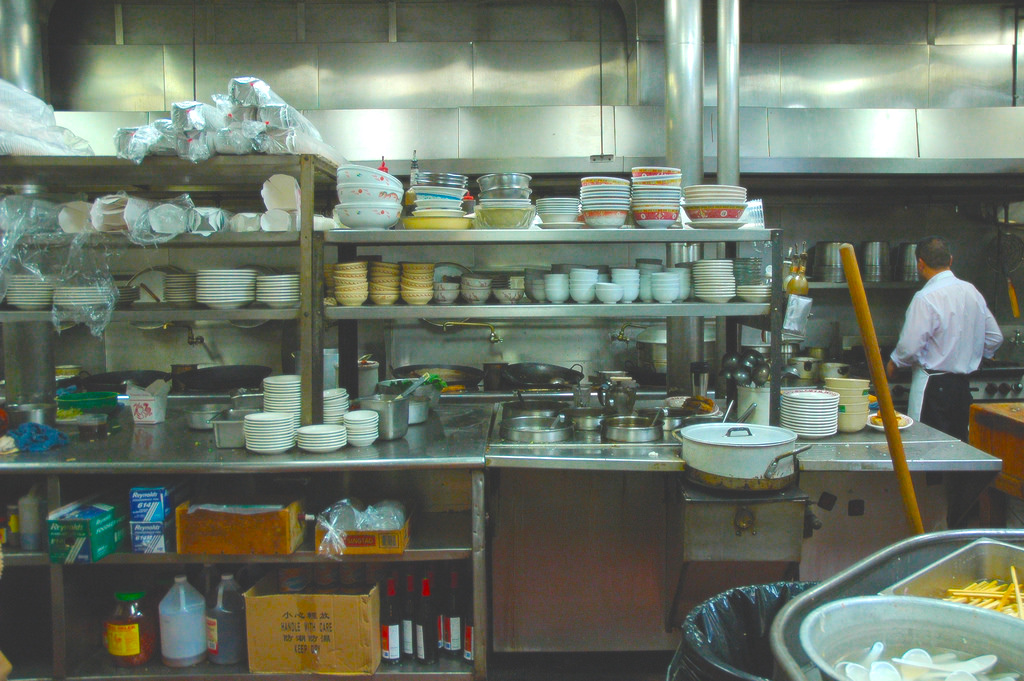For some of us who’ve worked the back-of-house at any restaurant, we know that the kitchen is straight up hell. Things always gotta move fast, order chits pile up like crazy on busy nights, and more often than not, you end the night smelling like a cocktail of sweat, spices and charred food.
One spot that’s always a hard time for beginner chefs is none other than the kitchen of an atas Chinese restaurant. Have you seen the amount of dishes offered in places such as Din Tai Fung, Taste Paradise and Wan Hao? You can bet that it’s a whole different dimension in their kitchens, where everything needs to run like a well-oiled machine.
23-year-old Melissa Tsang should know how things go about in one. As a recently inducted commis chef in a Chinese restaurant along Orchard road, she has since become familiar with the ins and outs of its kitchen, along with the many roles and tasks of the back-of-house staff.
Luckily for us curious ‘uns, Tsang recently detailed every single aspect of her workplace — from the hierarchy of wok chefs to the inter-department teamwork involved in each plate. You really should read the whole thing in her fascinating blogpost, or check out some of the highlights below:
On the role of a head chef at the wok line

“Wok 1 is head chef, 老大/大佬. He makes the big and final decisions for the main kitchen. He doesn’t do much prep work. If there are orders for abalone, sea cucumber, alaskan crab, the expensive stuff, they go to him. But he is really more important as a political figure, not as a cook. Like a gang leader, or any head chef, he is supposed to enforce discipline and consistency in his kitchen. He is also supposed to protect the interests of the main kitchen, especially against Front-of-House and higher management, especially in disputes with HR. For this reason, people expect him to exhibit a lot of machismo and dominance, or else they consider him ineffective and weak.”
On the inter-department teamwork involved

“I’ll first explain what happens when we get a single order, using the above example – “Seafood fried rice, medium, +salted fish, on hold, no MSG, not too oily, VIP, split into 6 portions”. The dude at the chopping board has already pushed the lettuce, diced seafood, and salted fish from his side to our side of the table. We take a quick glance at the order sheet. First, we grab a medium-sized portion of rice. Then we transfer everything from our side of the table, to the table directly accessible to the wok guys. We tell him, “no MSG, not too oily”. We then fetch a serving tray, six small plates, a small rice bowl, and a metal dish. The wok guy makes the fried rice, dumps it in the metal dish, then we portion the fried rice using the small rice bowl (so that every portion is in a neat little mound). This fried rice example is a very simple example involving a bit of communication between our section and the wok line.”
On the challenging job in the butchery

“The person working in butchery has one of the most strenuous jobs ever. Our butcher happens to be the largest dude in the kitchen. When deliveries come, they go straight to his room. He is the one who has to wash cartons and cartons of vegetables alone, break down entire carcasses of cod, hack entire legs of Jinhua ham, chop crates of ribs into smaller chunks, etc. He has to lug boxes and boxes of stuff to and from the walk in freezer. These are on top of the fish and seafood he has to kill and clean. He mostly works with the heaviest cleaver.”





Reader Interactions